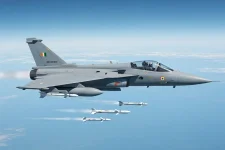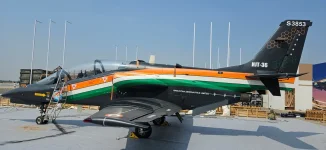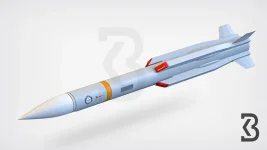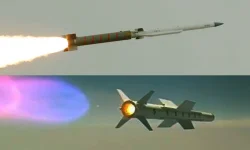- Views: 3K
- Replies: 8
The Indian Air Force (IAF) is actively pursuing the development of anti-drone capabilities using its fleet of attack helicopters, including the Boeing AH-64 Apache and the indigenously developed Light Combat Helicopter (LCH) Prachand.
This initiative comes in response to the growing threat of armed drones and remotely piloted vehicles (RPVs) in modern warfare, as evidenced by their prominent role in recent conflicts in Ukraine and the Middle East.
Drones often evade traditional air defence systems, posing a significant challenge for armed forces worldwide. The IAF's move follows a successful demonstration by the US Army, where an Apache helicopter equipped with a modified AGM-114 Hellfire missile neutralized a drone during a training exercise in Saudi Arabia.
While Israel has already integrated anti-drone capabilities into its Apache fleet, this recent US test further reinforces the viability of this approach.
The IAF currently operates 22 Apache attack helicopters, acquired in 2015, and is evaluating their potential in this new role. However, the indigenous LCH Prachand appears to be the frontrunner for dedicated anti-drone operations.
The LCH Prachand, inducted into service in October 2022, offers several advantages for anti-drone operations. Its agility, maneuverability, and high climb rate make it well-suited for intercepting drones. Wg Cdr (retd) Unni Pillai, HAL’s former Chief Test Pilot (Rotary Wing), emphasized the LCH's speed and diverse weaponry as key assets in this role.
Furthermore, the LCH's ability to operate effectively in high-altitude environments, such as the challenging terrain of Leh, makes it particularly well-suited for India's operational needs. Its smaller radar cross-section and advanced warning systems enhance its survivability in contested airspace. Currently armed with MBDA’s Mistral air-to-air missiles and a 20mm cannon, the LCH possesses the firepower to effectively engage drones.
As an indigenous platform, the LCH offers the significant advantage of easier customization and integration of new sensors and weapons specifically designed for anti-drone warfare. This can be achieved rapidly and cost-effectively by Hindustan Aeronautics Limited (HAL) with support from India’s growing defence industry.
The IAF's exploration of the Apache and LCH Prachand for anti-drone roles demonstrates a proactive approach to addressing evolving threats in modern warfare. By leveraging its existing assets and indigenous capabilities, the IAF aims to bolster its counter-drone capabilities and maintain a technological edge on the battlefield.






